We truly hope that you greatly enjoy reading, and hopefully learning from, this article about 7 Stunning United States Mammals as much as we enjoyed creating it for you. These animal range greatly in size and appearance, but we think they will all truly fascinate you.
Obviously, these 7 Stunning United States Mammals represent the barest handful of the species found in this region of the world. It’s our hope that learning more about these few will engender in you a desire to learn of more. We invite you to peruse our other articles.
Ocelot
Ocelot Facts
- Leading off this article about 7 Stunning United States Mammals comes the magnificent feline known simply as the Ocelot.
- Perhaps most notably, the short term for the animal serves as the generally accepted common name of a truly stunning species of wildcat. Despite its size, however, the scientific name for the animal aptly points out its relationship with larger felines.
- That holds true due to the fact that this name remains the impressive, though difficult to pronounce, term of the Leopardus pardalis. The renowned Swedish zoologist Carl Linnaeus became the first person to officially describe the species, in 1758.
- Quite sadly, in the past, mankind widely hunted the animal for its pelt, which was regarded as highly valuable. Thankfully, due to a more enlightened government, this practice was banned decades ago throughout its endemic territory.
- Very fortunately, while most wildcats see their numbers dwindling rapidly, the beautiful Ocelot stands apart. That’s because the creature holds the distinction of being one of the few wild felines that the IUCN lists as a Species of Least Concern.
- Previously, it held the status of Endangered, until the year 1996. But, thankfully, efforts at protecting the creature allowed its numbers to bounce back significantly. It now faces the potential threat posed by ongoing climate change.
Ocelot Physical Description
First of all, the remarkable Ocelot earns its attention for reasons other than sheer size. To be more precise, the beautiful feline qualifies as a moderate-sized variety of wildcat. The species also displays a comparatively moderate degree of sexual dimorphism.
Females of the species often weigh as much as 25 lb (11.3 kg). The males, meanwhile, reach a greater weight of as much as 34 lb (15 .5 kg). Both sexes this beautiful mammal additionally attain an average overall body length of between 22 – 39 in (55 – 100 cm).
That makes the magnificent species significantly smaller in size than most, but not all, wildcats. The moderately impressive tail, however, adds an additional 10 – 16 in (25.5 – 41 cm) to the total length of the feline. It also serves to add to its beauty.
In color, the fur of the gorgeous Ocelot displays predominantly a tawny yellow with numerous black markings. Additionally, the neck and belly typically display a white coloring. Meanwhile, its fur usually remains short on the belly but grows longer on the back.
But, its distinctiveness does not end there. Adding to its visual appeal, the small ears usually remain rounded. These also display a prominent white spot, creating a dramatic effect. The eyes most commonly show a brown color that reflects patterns of gold in bright light.
- Kingdom: Animalia
- Phylum: Chordata
- Class: Mammalia
- Order: Carnivora
- Family: Felidae
- Genus: Leopardus
- Species: L. paradis
Ocelot Distribution, Habitat, and Ecology
Most notably, the actual range of the amazing Ocelot covers an extensive region of the globe. More precisely, this zone of habitation extends through portions of the United States, in North America, through Mexico and much of Central America and South America.
But, population densities for the creature also vary somewhat widely throughout its range. However, the highest known density occurring in Panama. In all areas, though, this particular animal inhabits an impressively wide range of habitats.
This flexibility contributed to its numbers rebounding from a few decades ago. These habitat types include such regions as rainforests, scrublands, mangrove forests, and even coastal marshes. It prefers lower elevations, but some occur as high as 9,843 ft (3,000 m).
Like all wildcats, the breathtaking Ocelot also evolved to have an entirely carnivorous diet. Given its habitat range, and its size, its primary prey consists of smaller creatures. Thankfully, however, its native range continues to have an abundance of these.
These include such species as rabbits, rodents, fish, birds, opossums, armadillos, and occasionally small reptiles and even insects. Finally, hunting typically occurs during the evening and at night, but sometimes happens during the day when necessary.
Pallid Bat
Pallid Bat Facts
- Appearing next among our choices for inclusion in this article about 7 Stunning United States Mammals comes one many people remain unaware of, the Pallid Bat.
- Firstly, the distinctive term for the mammal serves as the common name for the species of bat with the bulky scientific name of Antrozous pallidus. Secondly, this surprising creature also holds a moderate claim to fame, at least in scientific circles.
- That holds true due to a claim that very few species can make. That remains the fact that the mammal also presently remains the only species within its genus. It also bears a close relationship with another variety of bat, the Van Gelder’s bat.
- This amazing species also distinguishes itself from other bats in yet another, more important manner. That’s due to a rather startling evolutionary divergence. Quite amazingly, it does not always employ echolocation to locate its food.
- Although it does certainly have and use this ability, it also sometimes hunts in a different fashion. In this instance, though, the animal uses its large ears to locate its food. In this case, it employs them to locate prey, usually insects, on the ground.
- Most fortunately, the fascinating Pallid Bat appears to continue to be relatively abundant throughout the entirety of its natural range. Due to this, the IUCN currently lists the animal as Least Concern on its Red List of Threatened Species.
- The remarkable creature nevertheless still faces several potential concerns regarding its future. That’s because, like many species, it faces the danger of habitat loss. It also, however, must now deal with the threat of climate change.
Pallid Bat Physical Description
Despite its other unique and distinctive characteristics, the fascinating Pallid Bat nevertheless remains a physical modest-sized species. But, it does remain unlike the vast majority of the other types of bats in the world in one particular regard.
That holds true because the fascinating species displays no noticeable degree of the trait of sexual dimorphism. As a result of the lack of this genetic trait, mature adults of both genders attain roughly the same average head-and-body length.
More precisely, this equals a measurement of about 2.4 – 3.35 in (6.0 – 8.5 cm). The over-sized tail may additionally account for 1.4 – 2.25 in (3.5 – 5.7 cm) of this length. This type of bat also achieves an average wingspan measuring roughly 15 – 16 in (38 – 40 cm).
This remarkable animal further develops a somewhat distinctive fur. To be more precise, this fur reportedly has a feel akin to that of soft wool. This fascinating pelage almost exclusively presents a highly uncommon two-tone color pattern.
That’s due to the fact that it appears as light brown to a cream color on the upper side of the small body. Meanwhile, the rest of the body diverges from this. In a moderately sharp contrast, the Pallid Bat presents a decidedly pale white color on the under side.
- Kingdom: Animalia
- Phylum: Chordata
- Class: Mammalia
- Order: Chiroptera
- Family: Vespertilionidae
- Genus: Antrozous
- Species: A. pallidus
Pallid Bat Distribution, Habitat, and Ecology
Most notably, the remarkable Pallid Bat inhabits a quite extensive habitat range compared to other varieties of bats. To the great surprise of many people, the truly remarkable small mammal appears throughout a large portion of the continent of North America.
More precisely, this bat lives in areas extending from British Columbia, in Canada, through the western United States, and as far as central Mexico. Also, for currently unknown reasons, one small population of the creature also currently resides in Cuba.
Regardless of its exact geographical location, however, the impressive mammal displays a marked preference for a specific habitat type. That consists mainly of desert or at least semi-arid regions within its native range. This is a trait shared by many related species.
Although it roosts opportunistically, it most frequently prefers stony outcroppings. But it will also opportunistically roost in regions such as pine and oak forests, and even farmland. It also often has two roosts, one for day use and one for the night.
In another deviation from the patterns displayed by most bats, it does not mainly consume flying insects. It typically hunts its prey on the ground. Although it will take virtually any arthropod it finds, this typically consists of crickets, but sometimes even includes scorpions.
As a result, the diet of individual specimens of Pallid Bat varies somewhat. This occurs because it principally consumes various locally prevalent arthropods. In fact, this insectivore often consumes as much as half its body weight in prey every night.
Steller Sea Lion
Steller Sea Lion Facts
- Here we present the third of our selections to include among these 7 Stunning United States Mammals, the remarkable Steller Sea Lion.
- The term for this magnificent work of evolution serves as one of the common names of a particularly impressive variety of mammal. This incredible wonder of evolution also goes by the alternate common name of the northern sea lion, though.
- Its scientific name, however, remains that of the extremely difficult to pronounce term of the Eumetopias jubatus. Regardless of which name one chooses to use to refer to it, however, this animal ranks as the largest of all forms of eared seals.
- In point of fact, among the group known to researchers as pinnipeds, it ranks very near the top in terms of sheer physical seize. That’s true since only the walrus and 2 species of elephant seals grow to a larger size than this amazing animal.
- The species bears the common name that it does in honor of the first person to officially recognize the species. That was the well respected German botanist and zoologist, Georg Wilhelm Steller. This fortuitous description occurred in the year 1741.
- Quite sadly, and for reasons that remain undetermined, its numbers have decreased substantially in the past 30 years. This fact, most unfortunately, holds true throughout most of its range. Ongoing research continues to seek a reason, though.
- Numerous, though sadly, not all, countries have therefore banned the slaughter of these impressive marine creatures. Due to these facts, the IUCN currently lists this magnificent ocean creature as Near Threatened.
- The magnificent Steller Sea Lion thankfully now has protection via the Marine Mammal Protection Act in the United States, however. Fortunately for the fascinating species, that country controls the largest portion of its endemic range.

Photo: Oregon Department of Fish & Wildlife
CCL: https://bit.ly/3fVZDVt
Steller Sea Lion Physical Description
Like many related species, the Steller Sea Lion displays a pronounced degree of sexual dimorphism. Females grow until the fifth year, while the larger males grow until the eighth year. Males also typically grown slightly longer and heavier than females.
The males have a much broader and stockier build than that of the shorter females. Males also average roughly 10.7 ft (3.3 m) in length and weigh as much as 2,470 lb (1,120 kg). Females attain an average length of 9.5 ft (2.9 m), and a weight of up to 770 lb (350 kg).
Both genders of the Steller Sea Lion typically show a tawny or reddish color as adults. By contrast, the pups appear almost black. Adult males also tend to have a dark tuft of hair around the neck, consequently giving them the appearance of having a small mane of hair.
- Kingdom: Animalia
- Phylum: Chordata
- Class: Mammalia
- Order: Carnivora
- Family: Otariidae
- Genus: Eumetpoias
- Species: E. jubatus
Steller Sea Lion Distribution, Habitat, and Ecology
The magnificent Steller Sea Lion inhabits a moderately large portion of the globe. This remains the case, at least, when its range is compared to related species. That holds true partly due to the fact that it inhabits a decidedly northern territory range.
More precisely, though, this awesome wonder of Nature inhabits an area that begins in the vicinity of the Sea of Okhotsk. This territory then roughly extends to an island off the coast of northern California, in the United States, in North America.
These extremely powerful predators most commonly live in areas consisting of various coastal waters throughout their range. The impressive mammals also typically congregate in relatively large groups for mating and rearing the young
This same process also usually takes place on the beaches of various remote islands. This tends to provide with a relative degree of safety. A single birth remains most common. Nevertheless, multiple births do happen occasionally as well.
As a very highly skilled marine predator, the Steller Sea Lion quite actively and aggressively hunts its prey. Individuals also generally feed on a wide range of prey. Yet, this does most typically consist of numerous mid-sized cephalopod and fish species.
Sometimes, however, individuals of this powerful predator prey on small species of seals. Understandably, its own natural predators remain few, given its size. But, it does occasionally fall victim to certain larger types of shark, as well as the Orca.
Cougar
Cougar Facts
- Appearing fourth on this listing of 7 Stunning United States Mammals, the fabulous Cougar does so only due to random selection.
- The short term for this animal serves as but one of the common names assigned to this magnificent wild feline. It other common names include the mountain lion, puma, painter, panther, and catamount. The variety of names occur due to its wide range.
- Scientists, meanwhile, know the stunning feline by the term Puma concolor. Regardless of the name one uses for it, the animal remains one of the most recognizable of the smaller wild felines. It’s also the most widespread of any in its Hemisphere.
- The renowned Swedish zoologist, Carl Linnaeus, holds the credit for the first acknowledged scientific recognition and naming of the species. This achievement he accomplished in 1771. The name he chose, however, later changed several times.
- This breathtaking feline obviously evolved as a slender and agile member of the cat family. It also holds a unique distinction. That’s because, though not technically one of the so-called big cats, it’s the fourth largest of all known wild felines.
- Even though its population doesn’t compare to past numbers, this appears stable throughout its range. The IUCN, therefore, currently lists it as Least Concern. It does face several threats, including the ever-increasing danger posed by climate change.
Cougar Physical Description
Unlike some species, the breathtaking Cougar actually impresses us with its size, in addition to other factors. The animal also, however, displays the physiological characteristic of sexual dimorphism. In this, in fact, it mirrors virtually all know types of feline, wild and domestic.
In its specific case, though, this trait manifests in terms of size, with males of the species attaining slightly greater lengths and weights. Mature adults of both genders, however, vary greatly in height, averaging between 24 -35 in (60 – 90 cm) tall at the shoulders.
In terms of length, meanwhile, is where the size differences appear the most obvious. The males of this feline attain an average nose-to-tail length equaling roughly 7.9 ft (2.4 m). Females, however, generally reach an overall length of about 6.7 ft (2.05 m).
It bears pointing out, though, that of this total measurement, the tail itself comprises 25 – 37 in (63 – 95 cm) of this. The males, meanwhile, typically reach a weight of between 115 – 220 lb (53 – 100 kg). Females, on the other hand, average 64 – 141 lb (29 – 64 kg).
The Cougar also boasts other impressive statistics. Its rounded head displays erect ears. The feline has a jaw and forequarters powerful enough to grasp large prey. It also has five retractable claws on the forepaws, and proportionately the largest hindlegs in the cat family.
- Kingdom: Animalia
- Phylum: Chordata
- Class: Mammalia
- Order: Carnivora
- Family: Felidae
- Genus: Puma
- Species: P. concolor
Cougar Distribution, Habitat, and Ecology
Pleasantly surprisingly, the gorgeous Cougar inhabits a comparatively large section of the globe. More precisely, it appears in a range that extends from parts of Canada to the Andes in South America. Its greatest concentration remains concentrated in North America.
Aiding in its continued existence as a species is the fact that it evolved as a highly adaptable creature. This flexibility allows it to inhabit a wide variety of habitat types within its native range. Most notably, though, these include forests, lowlands, mountains, and arid climates.
Its incredible physique allows the impressive feline some of the greatest leaping and short-sprint ability of any animal. Individuals have the ability to jump as high as 18 ft (5.5 m) in one bound. These also evolved the capacity to leap as far as 40-45 ft (12-14 m) horizontally.
But Nature did not stop there. This animal also boasts some extremely impressive speeds. The top running velocity of the animal also ranges between 40-50 mph (64-80 kph). They remain, however, best capable of short, powerful sprints as opposed to long chases.
The remarkable Cougar also feeds entirely as a carnivore. As a supremely successful generalist predator, the mammal further feeds opportunistically. Specimens therefore eat any animal they can catch, from insects to large ungulates in excess of 1,100 lbs (500 kg).
Investigations in Yellowstone National Park showed that elk, followed by mule deer, were the animal’s primary targets. The mammal further evolved as adept at climbing, allowing it to evade canine competitors. Although not strongly associated with water, it does swim.
Grizzly Bear
Grizzly Bear Facts
- This magnificent entry into this compilation of 7 Stunning United States Mammals is the breathtaking creature known as the Grizzly Bear.
- Perhaps most notably, the powerful and majestic large mammal actually represents a subspecies of brown bear. At one time there a total of five separate recognized species of Grizzly Bear existed. Each of these, furthermore, had their distinct range.
- Previously, two other subspecies of this magnificent creature existed in North America alone. Very sadly, however, the California Grizzly became extinct in 1924. The majority of experts now believe that the Mexican Grizzly has also become extinct.
- In a fascinating situation, individual bears living closer to the coast tend to be larger than those living inland. That appears to be due to the richer diet. Not surprisingly, this often leads people to believe that these bears represent separate species.
- Perhaps incidentally, these magnificent animals possess one of the longest natural lifespans of any ursine. Males of the species live an average of 22 years in the wild. The longer-lived females, meanwhile, often live to as much as 26 years of age.
- Its population and prevalence isn’t what it once was. The IUCN, nevertheless, currently lists the awesome Grizzly Bear as Least Concern. The countries it inhabits list it differently, though. Factors such as climate change also now threaten it.
Grizzly Bear Physical Description
One of the most noteworthy facts about the Grizzly Bear remains its tendency to display a significant degree of the characteristic of sexual dimorphism. In its specific case, however, this evolutionary trait manifests itself in terms of sheer physical size.
More specifically, the males of the species grow to much greater average sizes than the females. For their part, males attain an average weight of 790 lb (360 kg). The females, though, rarely exceed 400 lb (180 kg). Among large mammals, that’s a large difference.
Overall, though, an average individual attains a body length of about 6.5 ft (198 cm). This same average individual has a shoulder height of 3.35 ft (102 cm). Exceptional individuals do exist, however, with some attaining weights reaching as much as 1,500 lb (680 kg).
While coloring ranges from light tan to nearly black, a typical individual will display dark brown fur. The species also remains distinguished by the presence of a pronounced hump on the shoulders. This distinctly sets the animal apart from the smaller black bear.
The Grizzly Bear presents a powerful and dominating presence, indeed, but not just due to its body size. The magnificent animal also possesses extremely long, dangerous claws. Those on its hind paws average 2 in (5 cm) in length, but the front ones reach 4 in (10 cm).
- Kingdom: Animalia
- Phylum: Chordata
- Class: Mammalia
- Order: Carnivora
- Family: Ursidae
- Genus: Ursus
- Species: U. arctos
Grizzly Bear Distribution, Habitat, and Ecology
The stunning Grizzly Bear evolved as native to a somewhat smaller range than its cousin, the Black Bear. That zone of habitation nonetheless covers a respectable portion of the globe, at least compared to most of the large land mammals. It once extended further, though.
Presently, the gorgeous animal still inhabits a respectable portion of North America. This subspecies of Brown Bear appears as far east as Hudson Bay, in Canada. In the United States, it dwells from Alaska, through much of the northwestern parts of the country.
Its population, however, unfortunately continues to decline. This trend occurs more due to hunting and habitat loss, despite protection, than to other factors. Thankfully, though, this powerful ursine enjoys federal protection in the contiguous parts of the United States.
While it technically evolved as omnivorous, this ursine primarily has a carnivorous diet consisting of large quantities of small game, fish, and various plants. The precise diet of individuals varies, of course, depending on the specific area in which it lives.
Habitats also vary, sometimes quite significantly. This further, though naturally, depends on its territory. But that range most typically consists of plains or forests. Wherever it appears, the Grizzly Bear tends to avoid humans, unless threatened or disturbed.
The animal also spends an average of 5-7 months each year in hibernation. In an amazing development of Nature, pregnant females actually give birth during this period. The bears also typically live solitary lives, like many ursines, except while raising the young.
Ring-Tailed Cat
Ring-Tailed Cat Facts
- Our sixth choice for inclusion in this compendium of 7 Stunning United States Mammals is the fascinating creature deceptively known as the Ring-Tailed Cat.
- The descriptive term for this marvel of evolution excellently serves as one of several common names for a remarkable variety of mammal. Despite that particular term for it, the visually impressive creature has absolutely no relationship to felines.
- A few of its other commonly used names, meanwhile, include such terms as the miner’s cat, the ringtail cat, and the bassarisk. On the other hand, its scientific name remains that of the hard to pronounce term of the Bassariscus astutus.
- It also received this truly tongue-twisting name at the time of its first scientific recognition, in the year 1830. This scientifically important recognition occurred at the hands of the respected German zoologist, Martin Hinrich Carl Lichtenstein.
- Most fortunately, the marvelous animal appears to be maintaining a population base that is both sufficient and stable. This seems to hold true throughout the entirety of its native range. The IUCN, therefore, presently lists it as Least Concern.
- The remarkable mammal nonetheless must be considered to be facing at least some risks. Given mans encroachment on its territory, habit loss poses a very real threat. Its greatest danger, though, no doubt comes in the form of climate change.
Ring-Tailed Cat Physical Description
Although the remarkable Ring-Tailed Cat remains an impressive species, it doesn’t earn that status due to sheer size. In point of fact, it’s a comparatively small variety of mammal. Somewhat surprisingly, it actually remains smaller than the average house cat.
The animal further distinguishes itself from may other mammals in another way. This particular species displays no noticeable degree of the physiological trait of sexual dimorphism. While perhaps not technically rare, this does remain somewhat uncommon.
Mature adults of both genders attain an average body length of roughly 12 – 17 in (30 – 42 cm). These same individuals also develop a tail that also averages about the same length. Its weight also remains slight, measuring an average mass between 1.5 – 3.3 lb (0.7 – 1.5 kg).
The coloring of both genders of the Ring-Tailed Cat typically present as a buff to dark brown color, in random patches, on the body. The tail, however, displays the marvelous pattern of 14 – 16 black rings, which serves as the source of one of the common names.
- Kingdom: Animalia
- Phylum: Chordata
- Class: Mammalia
- Order: Carnivora
- Family: Procyonidae
- Genus: Bassariscus
- Species: B. astutus
Ring-Tailed Cat Distribution, Habitat, and Ecology
The magnificent Ring-Tailed Cat inhabits a moderately large section of the globe. This range covers a significant portion of the continent of North America. More specifically, though, this region includes part of the United States and the country of Mexico.
Within this relatively extensive range, though, the animal evolved as highly adaptable. As a result, it inhabits a wide range of habitat types. These include such regions as deserts, semi-arid areas, pine and oak woodlands, conifer forests, and chapparal.
The animal also appears within a broad range of altitudes. Individuals occur at heights of as much as 9,514 ft (2,900 m). Most though, live from sea level to around 4,593 ft (1,400 m) above sea level. It further prefers areas of canyons, rocky outcroppings, and talus.
The awesome Ring-Tailed Cat evolved as omnivorous in nature, like related species. Although it does display a decided preference for meat, it also consumes a moderate amount of vegetation. Its prey mainly consists of small animals, such as birds and frogs.
Its own predators, meanwhile, consist of several different species. These include such animals as coyotes, raccoons, bobcats, owls, and hawks. It does, however, have one means of defense. It evolved a gland that releases a highly pungent musk when threatened.
Swift Fox
Swift Fox Facts
- Closing out this article about 7 Stunning United States Mammals comes the remarkable canid most often called the Swift Fox.
- The simple yet descriptive term of Short Fox serves as the commonly used name for a small variety of wild canine. In scientific circles, however, this remarkable mammal bears the name of Vulpes velox. By either term, though, it’s an important species.
- That fact may surprise some people, though, if they make assumptions based on size. That’s due to the fact that this animal represents the smallest of the wild dogs varieties native to its part of the world. Size, however, remains unimportant in Nature.
- Though long known to the Indigenous Peoples of the region, Captain Lewis of the Lewis and Clark expedition became the first known European to spot the animal. That first recorded encounter occurred on July 6, 1805, as noted in his journal.
- At that time, the marvelous mammal appeared in large numbers. Sadly, though, as settlers moved into its region, its numbers began to dwindle. By the 1930’s, it ranked as an endangered species, mainly due to control programs targeting coyotes and wolves.
- Thankfully, however, concerted reintroduction programs began in 1983. Since that time, its population appears to have rebounded successfully. The IUCN, therefore, currently lists the Swift Fox as Least Concern of its red List of Threatened Species.
- Yet, this status remains sensitive to various factors. For now, it only occupies about 40% of its original range. Habitat loss, due to continued human expansion, additionally remains a factor. Its greatest threat, though, no doubt consists of climate change.
Swift Fox Physical Description
While visually pleasing to those who appreciate wild canines, the Swift Fox does not garner that appreciation due to sheer size. Not only does it rank as the smallest wild canid in its part of the globe, in fact it qualifies as among the smallest of related species in the world.
Other than sheer size, it shares many traits with the other canids on the planet. Among those is the physiological principal of sexual dimorphism. In its particular case, the males of the species develop as larger than the females. The difference, though, remains quite minor.
Overall, the mammal averages a height of roughly 12 in (30 cm). In length, meanwhile, it typically reaches about 31 in (79 cm), from the head to the end of the tail. The weight of the animal, furthermore, generally only ranges from between 5 – 7 lb (2.3 – 3.2 kg).
In terms of appearance, the Swift Fox displays a pattern of colors that provides natural camouflage in its native environment. This typically consists of a fairly dark tan, almost grayish shade. It also usually presents a tannish yellow on its sides and the legs.
The rest of the body presents a different color pattern, though. Its chest, throat, and stomach typically present colors ranging from off-white to a pale yellow. Black patches also appear on its muzzle. Quite distinctively, the ears also develop as comparatively large.
- Kingdom: Animalia
- Phylum: Chordata
- Class: Mammalia
- Order: Carnivora
- Family: Canidae
- Genus: Vulpes
- Species: V. velox
Swift Fox Distribution, Habitat, and Ecology
Sadly, the beautiful Swift Fox once had a much more extensive range of habitation than it does today. That’s because it evolved as native to a relatively wide swathe of North America. In fact, that territory covered parts of two of the three countries on the continent.
More precisely, it lived from western Canada, through the Great Plains to Texas, in the United States. Unfortunately, it disappeared from Canada by 1938. Even though it’s since been reintroduced, its numbers remain few, appearing in scattered small groupings.
The endemic habitat of this marvelous small mammal consists of regions of deserts and shortgrass prairies. In these environments, its natural coloring allows it to blend in successfully, aiding its survival. There, the creature lives in dens it builds in sandy soil.
The common name of Swift Fox derives from the simple fact that this animal remains capable of impressive speeds. Individuals sometimes reach speeds in excess of 31 mph (50 kph). This both aids the species in hunting and evading its own natural predators.
In terms of dietary habits, it’s technically classified as a carnivore. This species actually feeds as an omnivore, however. It also tends to feed quite opportunistically. Mainly consuming meat, this small predator hunts and feeds on any small animals it can catch.
This diet most commonly includes such prey as small reptiles, birds, amphibians, fish, insects, and mammals. It does nonetheless consume small quantities of plant matter. Local grasses and berries sometimes serve as a supplement for this intrepid hunter.
7 Stunning United States Mammals
We sincerely hope that you have thoroughly enjoyed reading and learning from this article about 7 Stunning United States Mammals. These incredible examples of the brilliance of Nature continue to fascinate and amaze those individuals who learn of them.
Most unfortunately, though, many of the species that share their range now find themselves facing serious threats to their continued existence. It’s up to each and every one of us to do all that we can to protect and preserve them, both for their sake and our own.
Check out our other articles on 3 Captivating Caves of Asia, 6 Mysterious Natural Phenomena, Earth’s Many Magical Moths, 3 Wondrous African Woody Shrubs
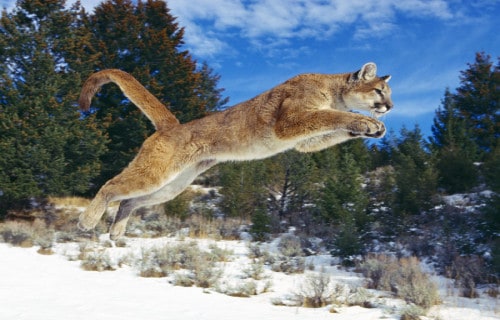
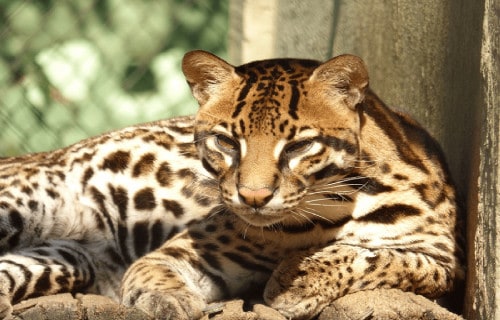
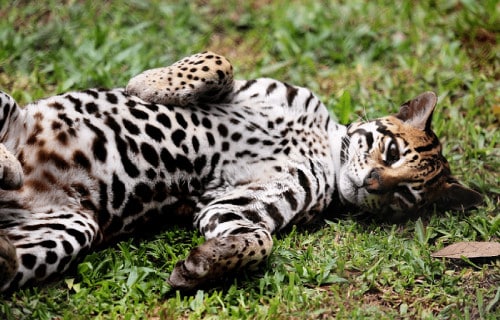
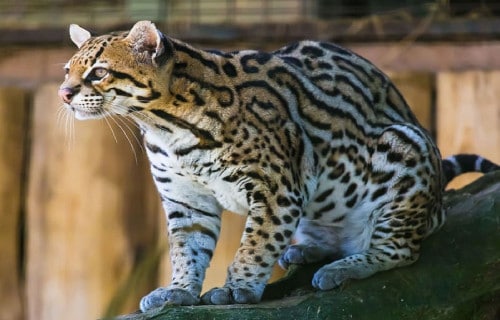
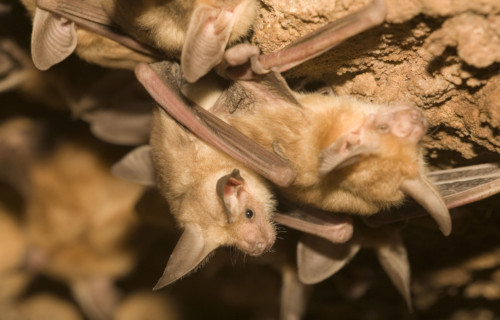
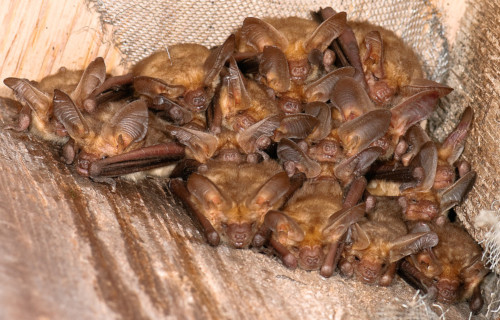
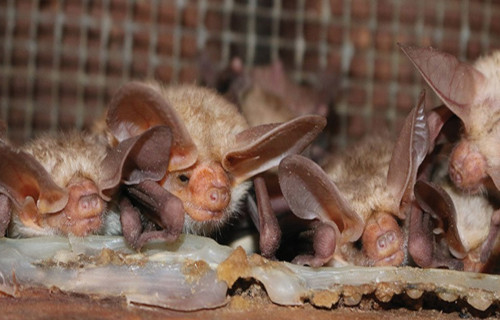
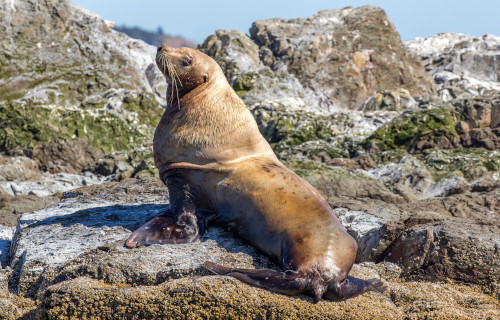

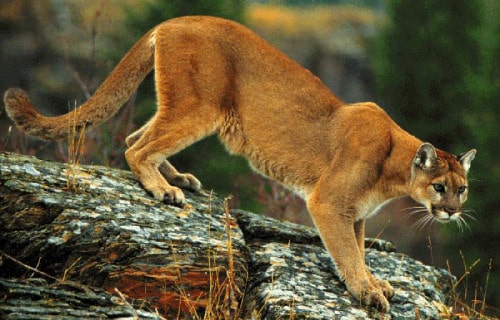
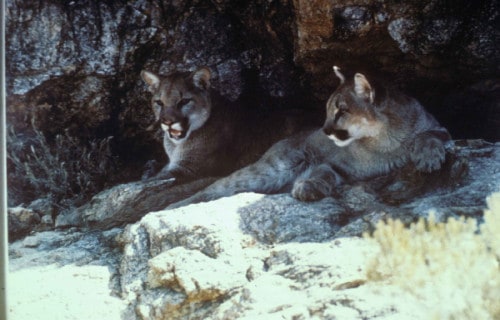
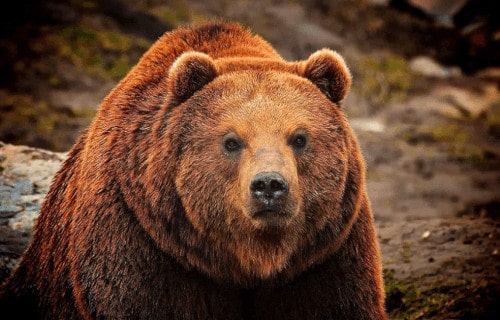
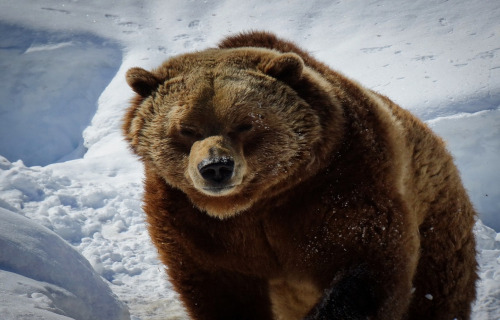
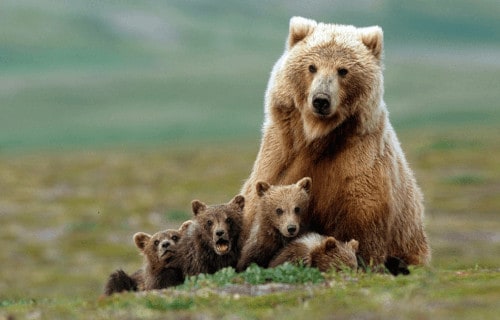
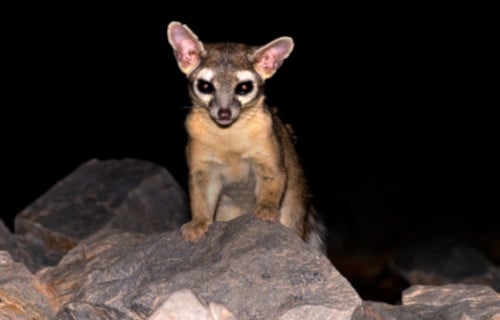
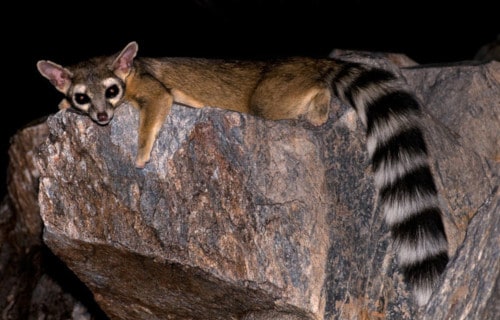
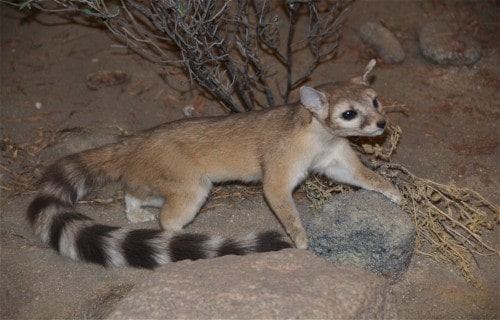
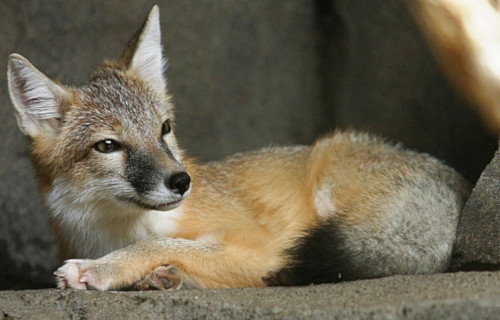
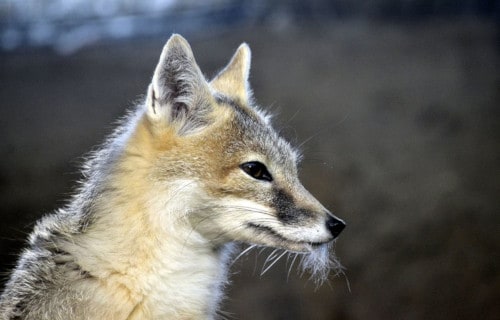










Leave a Reply